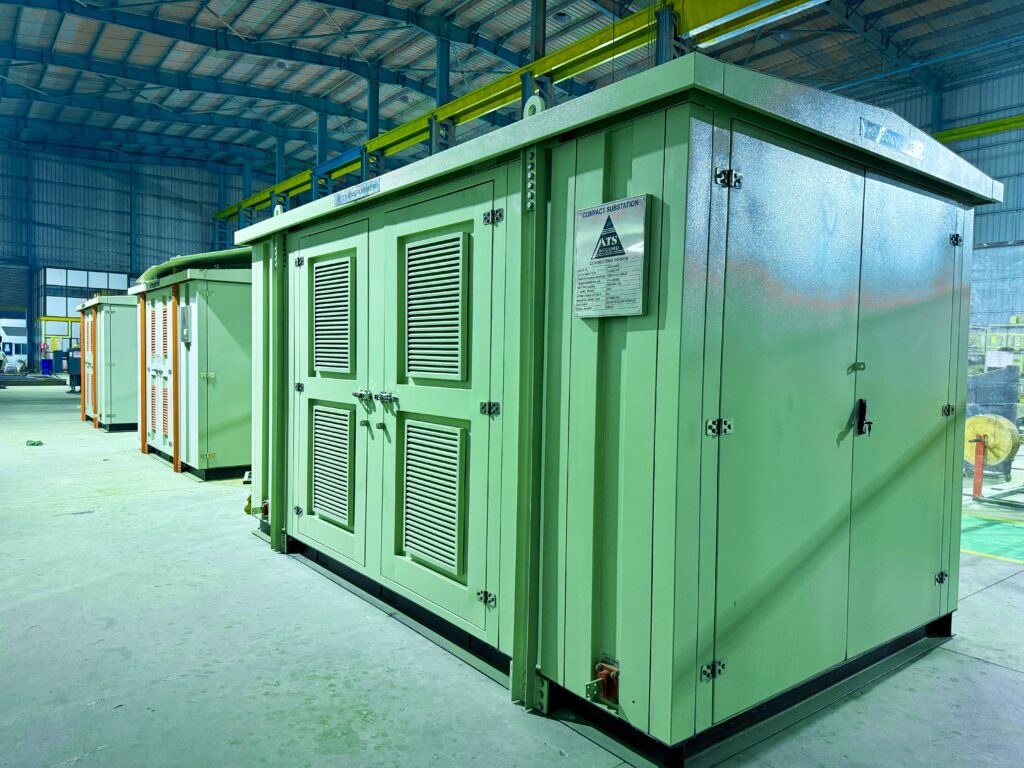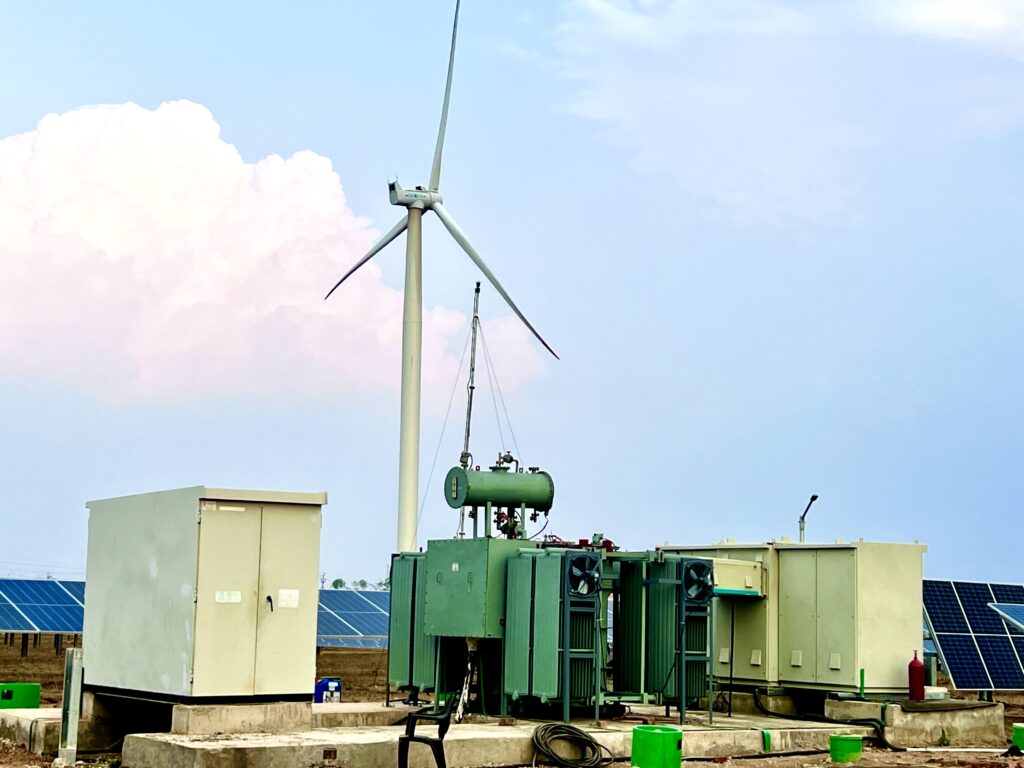ATS ACCORD’s Compact Substation: The Backbone of Energy Infrastructure in NHEV’s 3rd Generation Charging Stations
Source: EODB News | Published: 23 August
ATS ACCORD, as a vital Energy Working Group member of India’s National Highway for Electric Vehicles (NHEV) initiative, is spearheading the transformation of the electric mobility ecosystem through its state-of-the-art Compact Substation technology, deployed at the 3rd Generation (3G) Energy Charging Stations. These advanced stations embody a significant evolution in sustainable energy management, operating as integrated hubs that adeptly coordinate a mix of renewable and conventional power sources to meet the burgeoning needs of clean transport.
At the core of these 3G Energy Stations lies the Compact Substation, operating as the central energy management and distribution hub. Energy is sourced from four principal channels—solar panels, vertical wind turbines, hydrogen fuel, and thermal grids—each contributing to a diversified supply portfolio. These inputs are first pooled and meticulously balanced within a centralized power control room, which acts as the operational nerve center, ensuring real-time demand is met efficiently before channeling the consolidated power to ATS ACCORD’s Compact Substation.
The Compact Substation is indispensable in stabilizing, converting, and distributing power reliably across the entire station infrastructure. It guarantees continuous energy availability to electric vehicle chargers, auxiliary systems, and other station facilities. Thanks to its modular and cutting-edge engineering design, the substation gracefully accommodates fluctuations in power input, swiftly responds to transient spikes in demand, and sustains stable operation amidst irregular grid conditions or variable renewable energy output.
From a technical perspective, this infrastructure incorporates sophisticated components engineered for peak performance and safety. High-voltage SF6 ring main units provide superior insulation and enable swift fault interruption, enhancing system robustness. The smart transformer compartments are equipped with on-load tap changers (OLTC) that facilitate dynamic voltage regulation tailored to load demands. Low-voltage distribution panels include advanced circuit breakers and protective relays, ensuring operational safety and system integrity. These critical elements are assembled within galvanized carbon steel enclosures that are weather-resistant and manufactured under stringent Zero-Defect, Zero-Effect (ZED) principles to minimize environmental impact.
Designed to endure challenging environmental conditions across India’s diverse geography, the Compact Substation ensures unwavering uptime—a crucial feature to maintain the dependability of highway charging services where reliable access is paramount. ATS ACCORD’s adherence to exacting manufacturing standards, reinforced by international technological collaborations, guarantees that the infrastructure not only satisfies present demands but is also scalable to support the accelerating adoption of electric vehicles alongside the increasing integration of renewable energy sources in India’s transport ecosystem.
Beyond technological excellence, ATS ACCORD’s comprehensive engagement in the NHEV program aligns deeply with India’s broader vision of fostering clean and connected mobility. Drawing on extensive expertise in industrial power systems and engineering innovation, ATS ACCORD has established itself as a cornerstone entity powering the nation’s electric highway network. Through the robust, efficient, and intelligent energy distribution enabled by its Compact Substation, ATS ACCORD empowers these charging stations to operate as holistic energy ecosystems—effectively harnessing electrical power from multiple renewable sources and delivering it flawlessly to end users. This capability supports the resilience, sustainability, and reliable functioning of India’s expanding electric vehicle corridor infrastructure.
This commitment to infrastructure leadership is tightly woven into ATS ACCORD’s mission to propel India’s electric mobility transition forward. The Compact Substation emerges not merely as functional equipment but as a pivotal energy orchestrator that ensures steady power availability, expedites rapid EV charging, and underpins the ambitious vision of a sustainable, electrified transportation future.
The NHEV program’s energy strategy anticipates a deliberate and systematic evolution over the period from 2027 to 2040, moving towards increasingly cleaner energy sources. Initially, the energy mix from 2027 to 2030 will be split evenly between solar power and the thermal grid. From 2030 to 2035, wind energy will be incorporated, balancing the energy supply among solar, wind, and a gradually diminished thermal share. The period from 2035 to 2040 introduces hydrogen energy, further lowering the contribution of thermal power to less than 25%, resulting in a diversified, robust blend of solar, wind, hydrogen, and residual thermal energy. By 2040, the charging infrastructure is projected to reach its 5th Generation capacity, doubling energy dispensing capacity to 6,400 kilowatt-hours per hour. At that stage, solar, wind, and hydrogen will completely supplant thermal energy. This meticulously planned transition guarantees a reliable, sustainable energy supply for India’s rapidly growing electric mobility demands.

Complementing this progressive energy transition, ATS ACCORD’s Compact Substation technology is expertly engineered to accommodate multi-source energy integration and intelligent power management across the national electric highway network. As India moves decisively towards a greener energy future, ATS ACCORD remains at the vanguard, energizing the highway corridors of tomorrow and playing a foundational role in the country’s sustainable mobility revolution.
Looking ahead, starting August 1st, NHEV will initiate applications for developing micro-electrolysers capable of on-site hydrogen generation with an output of 800 kWh. These units are designed to optimally utilize surplus solar and wind energy during off-peak periods, particularly when vehicle charging demand is low and battery storage is fully replenished. Instead of letting the sanctioned load capacity remain idle, this excess power will be redirected to produce hydrogen, safely stored underground at these stations. This initiative represents a strategic advancement toward energy circularity, enabling multi-energy utility hubs. NHEV’s partner, Amara Raja Group, has already demonstrated promising results through hydrogen-powered bus storage and dispensing in Ladakh. Further, the inclusion of a hydrogen technology representative from NTPC into NHEV’s working group aims to accelerate technical integration and standardization.

If successful, this innovative approach will position NHEV to develop India’s largest hydrogen generation and dispensing network embedded within EV infrastructure. It will establish a pioneering dual-energy transition model that integrates both electrical and hydrogen fuel pathways—further enhancing India’s path toward clean, resilient, and future-ready transportation systems.
ATS ACCORD’s Compact Substation technology is a cornerstone of India’s electric mobility future, enabling seamless integration and reliable distribution of diverse clean energy sources. Their engineering excellence is vital in powering the national electric highways, ensuring that India’s transition to sustainable transport is both resilient and scalable
Mr. Abhijeet Sinha













